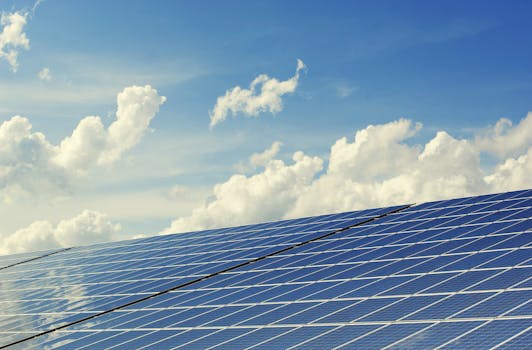Introduction to Floating Solar Power
As the world grapples with the pressing need for sustainable energy solutions, floating solar power has emerged as a promising innovation. This technology involves the installation of solar panels on bodies of water, creating artificial islands that not only generate electricity but also have the potential to produce hydrogen. With the dual benefits of renewable energy generation and land conservation, floating solar power is gaining traction globally.
The Mechanics of Floating Solar Power
Floating solar power systems consist of solar panels mounted on floating platforms, which are anchored to the waterbed. This setup allows for efficient energy capture while minimizing land use. The technology can be deployed on various water bodies, including lakes, reservoirs, and even oceans. Key components of floating solar systems include:
- Floating Platforms: These are typically made from durable materials like high-density polyethylene (HDPE) that can withstand harsh weather conditions.
- Solar Panels: Standard photovoltaic (PV) panels are used, which convert sunlight into electricity.
- Anchoring Systems: These ensure that the floating platforms remain stable and secure in the water.
Advantages of Floating Solar Power
Floating solar power offers several advantages over traditional land-based solar installations:
- Land Conservation: By utilizing water surfaces, floating solar reduces the need for land, which is especially beneficial in densely populated areas.
- Increased Efficiency: Water bodies help cool the solar panels, enhancing their efficiency and energy output.
- Reduced Evaporation: Covering water surfaces with solar panels can significantly reduce evaporation, conserving water resources.
- Dual Use of Space: Floating solar can coexist with other water activities, such as fishing and boating, maximizing the utility of the area.
Case Studies: Successful Implementations
Several countries have successfully implemented floating solar power projects, showcasing its viability and benefits:
- China: Home to the world’s largest floating solar farm, located in Huainan, this facility spans 100 megawatts (MW) and is built on a former coal mine. It generates enough electricity to power approximately 15,000 homes.
- Japan: Japan has invested heavily in floating solar technology, with projects like the Yamakura Dam floating solar plant, which has a capacity of 13.7 MW and provides power to around 5,000 households.
- India: The country is rapidly adopting floating solar systems, with the largest project in the state of Madhya Pradesh, boasting a capacity of 600 MW. This initiative aims to harness the vast water resources available in the region.
Floating Solar and Hydrogen Production
One of the most exciting prospects of floating solar technology is its potential for hydrogen production. By integrating electrolysis systems with floating solar farms, excess electricity generated can be used to split water into hydrogen and oxygen. This process offers several benefits:
- Energy Storage: Hydrogen can serve as a long-term energy storage solution, addressing the intermittency of solar power.
- Decarbonization: Hydrogen produced from renewable sources can significantly reduce carbon emissions in various sectors, including transportation and industry.
- Economic Opportunities: The hydrogen economy presents new business opportunities and job creation in the renewable energy sector.
Challenges and Considerations
Despite its advantages, floating solar power faces several challenges:
- High Initial Costs: The installation and maintenance of floating solar systems can be more expensive than traditional solar farms.
- Environmental Impact: The potential ecological effects on aquatic ecosystems must be carefully assessed and managed.
- Regulatory Hurdles: Navigating the regulatory landscape for water use and energy generation can be complex and time-consuming.
Conclusion
Floating solar power represents a significant advancement in renewable energy technology, offering a sustainable solution to the growing energy demands of our planet. By harnessing the power of the sun on water surfaces, this innovative approach not only conserves land but also enhances energy efficiency and opens avenues for hydrogen production. As countries around the world continue to explore and invest in floating solar projects, the potential for this technology to contribute to a cleaner, greener future is immense. With careful planning and consideration of environmental impacts, floating solar power could play a pivotal role in the global transition to renewable energy.
